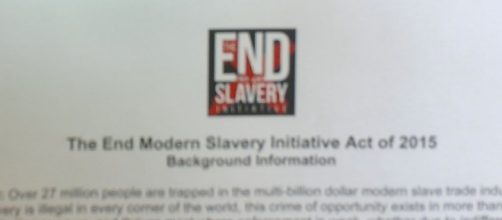In February 2015,SenatorCorker of TN introduced bi-partisan legislation “The End Modern Slavery Initiative Act of 2015” aimed at reducing the more than 27 million people currently trapped in the slave industry, working in themining, fishing, timber, textiles, and sex industries.
The proposal callsefforts to eliminate sexual and labor human slavery worldwide.
Numerous Non-Profits have been created to help free slaves both overseas and in America.
Covenant House has been operating more than 20 locations in the Americas since the 1970s. In 2015, the New Orleans facility had 80-100 victims of modern day slavery seek help.
Many worldwide organizations exist such as Anti-Slavery, Free the Slave, End Slavery Now, the CNN Freedom Project, and Heart for Justice.
New Orleans monuments offer lessonson how to transition from slavery
Education is a common thread. Leadership and a transition plan are essential. Engraved onthe Liberty Placemonument are the words: “A conflict of the past that should teach us lessons for the future.”
- Amonument is to Jefferson Davis, who co-owned Hurricane plantation with his brother Joseph Davis, offers this message.
Joseph Davis met with a newly acquired slave named Benjamin Montgomery andimplemented policies for slaves to become educated, experienced,accumulate wealth by retaining money earned commercially.
Montgomery was first assigned to run the general store of the plantation, then his duties were expanded to purchasing, shipping, land surveying, flood control, architecture, machine repair, and steamboat navigation.
He worked as an inventor and applied for a patent for his design steam-operated propeller for shallow water. However the US Patent office denied the patent, because Montgomery was a slave.
When Jefferson Davis became President of the Confederacy, he signed into law legislation that would allow slaves to receive patents.
In 1866, the Davises sold Hurricane Plantation to Montgomery for $300,000.00 and carried the note.
In 1867, Montgomery became the first African-American elected official in Mississippi.
In 1870, his cotton was judged to be the best in the world.
- The Battle of Liberty Place Monument is to a battle in which eleven New Orleans Metro Police Officers were killed defending an African-American Lt. Governor, C.C. Antoine, in 1874. Antoine served as Interim Governor in 1876.
His grandfather was a tribal chief, captured and sold into slavery in the West Indies.
He was privately educated in New Orleans and relocated to Shreveport after the Civil War.
He was an entrepreneur, property owner, human rights advocate, and newspaper publishers.
- P.G.T. Beauregard’s monument was erected after a twenty-two year fund raising campaign, following his death. His monument turned 100 years old in November 2015.
Beauregard was born in 1818 in New Orleans.
In 1838, he graduated second in his class at West Point with English as a second language.
From 1865-1875, he worked as superintendent of two railroads.
In 1873, he was the Primary Spokesman for the Unification Movement. He organized 100citizens of New Orleans to design a plan for desegregation of schools and transportation.
- Robert E. Lee wrote to his wife in 1858: “In this enlightened age, there are few I believe, but what will acknowledge, that slavery as an institution, is a moral & political evil in any Country."
In 1955 the US Congress described Lee with these words: “...(he) fervently devoted himself to the reuniting of the nation and the advancement of youth education and the welfare and progress of mankind, becoming president of the Washington and Lee University…”
Lee’s stated: “We have but one rule here, and that is that every student be a gentleman.”
The leadership of these men and theNew Orleans Police provide lessons for ending slavery with education.

